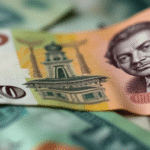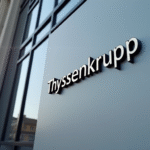A Dominant Market with Over 10,000 Million Liters Annually
The Mexican beer market is a significant industry, with annual consumption exceeding 10,000 million liters. In 2024, the market reached 1,187 million cases of 24-bottle boxes, equivalent to 10,120 million liters. The market is projected to grow by 1,628 million cases by 2034, with an annual growth rate close to 3.2%.
The economic impact is substantial, as 65 cents of every peso produced from alcoholic beverages in Mexico come from beer, according to INEGI. Mexican beer not only satisfies domestic demand but also leads in agroindustrial exports.
The Duopoly: Grupo Modelo and Heineken Mexico
The market is almost entirely concentrated in two major players:
- Grupo Modelo (AB InBev): approximately 57% of the market, equivalent to 5,770 million liters.
- Heineken México (Cuauhtémoc-Moctezuma): around 40%, which is 4,050 million liters.
- Others and Craft: a mere 3% (300 million liters).
Grupo Modelo’s flagship brands are Corona, Victoria, and Modelo Especial, while Tecate and Dos Equis form the backbone of Heineken Mexico’s portfolio. Together, these top five brands dominate the Mexican beer landscape.
The Mexican Consumer: Young and Frequent Drinkers
The typical beer drinker in Mexico falls between 18 and 35 years old, with employment, middle-level education, and a preference for frequent consumption. Nationally, the average is around 68 liters per person annually, which equates to more than one liter per week.
Among young adults aged 18 to 24, purchase frequency is higher, with a tendency to experiment with light beers, special flavors, and non-alcoholic versions. The latter have grown by 64% since 2015, aligning with the demand for healthier options.
The Power Behind the Brands
The dominance of these brands is not a coincidence:
- Coverage: Oxxo, Modelorama, and convenience stores ensure immediate availability.
- Investment: Heineken plans to invest $2,750 million to expand operations (including a plant in Yucatan), while Grupo Modelo will invest $3,600 million in modernization and logistics.
- Extensive Portfolios: From clear lagers and dark beers to premium segments and non-alcoholic options, each company aims to cover all consumption occasions.
- Brand Building: Sports sponsorships, international campaigns, and cultural roots turn these brands into symbols of identity.
Trends and Challenges
Premiumization: Mexican consumers are willing to pay more for brands considered “special” or “gourmet.”
Sustainability and Water: The industry faces criticism for intensive water use in water-scarce regions, leading to sustainability commitments.
Craft Beer Competition: Although it only accounts for 1% of the market, craft beer gains visibility in urban and tourist niches.
Corona, Modelo, Victoria, Tecate, and Dos Equis are not only the most requested beers in bars, restaurants, and family gatherings; they represent the concentration, scale, and economic muscle of an industry that sets the standard in Mexico and globally.
The Mexican market will continue to grow in volume and value, but the challenge for large companies is to maintain their leadership amid increasingly younger, more conscious consumers and a diversifying offer.
Key Questions and Answers
- What is the size of the Mexican beer market? The Mexican beer market reached 1,187 million cases of 24-bottle boxes in 2024, equivalent to 10,120 million liters. The market is projected to grow by 1,628 million cases by 2034.
- Who are the major players in the Mexican beer market? Grupo Modelo and Heineken México control 97% of the market, with Grupo Modelo holding around 57% and Heineken México controlling approximately 40%.
- What are the key consumer trends in Mexico? The typical beer drinker in Mexico is young, employed, and prefers frequent consumption. There’s a growing interest in light beers, special flavors, and non-alcoholic options.
- What challenges does the Mexican beer industry face? The industry faces pressure to adopt sustainable practices due to water scarcity concerns. Additionally, craft beer competition is on the rise, though it still only accounts for a small percentage of the market.






